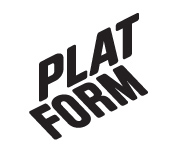Artist statement
During my stay at Platform’s residency in Vaasa, Finland, a newspaper debate had been going on about the name of a residential estate planned by the famous Finnish architect Alvar Aalto. According to Aalto all the wooden semi-detached houses that form the area should originally have been painted in pastel colors. But due to changes that ABB Strömberg, a local factory, did to the houses – that were planned to be rented out to the factory’s employees – upset Aalto and he suggested that the houses should instead be tarred. The dark colour of the tarred houses made the local people name the village Neekerikylä (FI)/ Negerbyn (SE) – the “nigger village”.
Even though the houses today are painted in a light color, the name still remains as the official post address to the village; regardless that the inhabitant association has appealed to the city authorities since 2003 to change the official name of the area and a sign with the name ‘Aalto park’ having replaced the former sign of the village. After following the debate in local newspapers and blogs I explored the fact that changing the name of a place is not as self-evident as it might seem.
The series of photographs that I call Jussilandia is inspired by the local tradition of knitting. The original inspiration for the specific pattern that has caught my interest comes from the Korsnäs-pullover that was locally knitted by women who, together, knitted on one shared pullover. Out of these traditions the Jussi-pullover was born in the 1920s. With its simplified design and its square patterns the Jussi-pullover has hit it big time. The symbolic and identification value of the pullover is strongly rooted in the region. Originally named after Jussi Harri, the main character in a film from 1925 called Pohjalaisia, which celebrates the regional population, the pattern can nowadays even be found on sport jackets. The Finnish brand and online lifestyle clothing supplier extremeduudsonit.com, merely a variation of MTV’s Jackass, also uses the pattern as tattoos on their models. This is actually making popular culture out of cultural heritage and of the regional knitting tradition.
About the artist
Mattias Olofsson is based in Umeå, Sweden. Questions about identity in relation to belonging and exclusion are themes that reappear in his work. He is inspired by roles, masks and mix-ups and situations where identity is created through the subject taking place or being placed, or given a role, in a bigger structure. In one recent project Olofsson slips into the role of Stor-Stina, borrowing the identity of a Sami-woman who lived in the nineteenth century, belonging to the Scandinavian nomadic population. Stor-Stina never stopped growing, which also gave her the name Stor – referring to Big Stina or Stina the Great. Stor-Stina was sent around Europe to be exhibited as a human spectacle. Slipping into her identity Olofsson explores what the experience of otherness in a particular look can lead to. The traditional Sami dress she would have been wearing, worn by Mattias Olofsson, signifies not only history or tradition repeated, it is also about the displacement of the tradition that raises issues of, for example, cross-dressing. Touching the ever-reoccurring question in Olofsson’s art is: In which way does history affect us?
Olofsson’s latest shows including this theme are: Vem bryr sig om Snövit och Rödluvan? (Who cares about Snow White and Little Red Riding Hood?), Skellefteå konsthall (2009); Guest of Honor : Sweden, Indian Hall COEX, Seoul (2009); Rightfully Yours, Justina M. Barnicke Gallery, Toronto (2007); Svenska Hjärtan, (Swedish Hearts), Moderna Museet, Stockholm (2004); Strategies of learning, Periferic7, Iasi (2006).
Comments closed


















